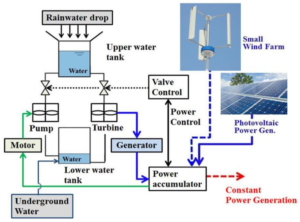
Menu
OrientMCT
Power Systems Design
Power systems design involves the planning, analysis, and implementation of electrical power systems for various applications. It encompasses the design of power generation, transmission, distribution, and utilization systems to ensure safe, reliable, and efficient electrical power delivery. Here are some key aspects of power systems design:
Load Estimation: Estimating the electrical load requirements is essential in determining the capacity and size of the power system components. Load estimation involves considering factors such as power demands, load types (resistive, inductive, or capacitive), diversity factors, and future growth projections.
Power Generation: Designing the power generation system involves selecting the appropriate sources of power, such as thermal power plants, hydroelectric plants, wind farms, or solar photovoltaic systems. Factors considered include power output requirements, availability of fuel or renewable resources, environmental considerations, and system efficiency.
Transmission and Distribution: Planning the transmission and distribution network involves determining the optimal configuration and sizing of transmission lines, substations, transformers, and distribution lines. Considerations include voltage levels, power losses, fault protection, voltage regulation, and system reliability.
Power Factor Correction: Implementing power factor correction techniques helps improve the power quality and efficiency of the system. This involves designing and installing capacitors or other reactive power compensation devices to mitigate the effects of inductive loads and reduce reactive power consumption.
Protection Systems: Designing effective protection systems is crucial to safeguard equipment and personnel from electrical faults and ensure system reliability. This includes selecting and coordinating protective devices such as circuit breakers, relays, fuses, and grounding systems to detect and isolate faults promptly.
Energy Efficiency: Incorporating energy-efficient technologies and practices is an integral part of power systems design. This includes optimizing system components, such as motors, drives, and lighting, for energy efficiency, as well as implementing energy management systems and demand-side management strategies.
Control and Monitoring: Designing control and monitoring systems enables efficient operation and management of the power system. This includes implementing supervisory control and data acquisition (SCADA) systems, remote monitoring, load shedding schemes, and automated control strategies for optimal system performance.
Safety Considerations: Safety is paramount in power systems design. Ensuring compliance with electrical codes, standards, and regulations is essential. Designing proper grounding systems, implementing protective measures against electrical shocks, and considering fire protection and emergency shutdown systems are important aspects.
Reliability and Redundancy: Designing power systems with adequate redundancy and backup capabilities helps ensure reliable power supply. This may involve redundant power sources, backup generators, uninterruptible power supply (UPS) systems, and automatic transfer switches.
Future Expansion and Flexibility: Anticipating future needs and allowing for system expansion and flexibility is crucial in power systems design. Incorporating modular designs, planning for future load growth, and considering advancements in technologies allow for efficient system upgrades and modifications.
It is important to note that power systems design requires the expertise of qualified electrical engineers and professionals who possess a deep understanding of electrical principles, industry standards, and best practices

Get In Touch!
Contact us for a quote or in case of any urgent queries please send us an email on: [email protected]
we will get back to you right away!